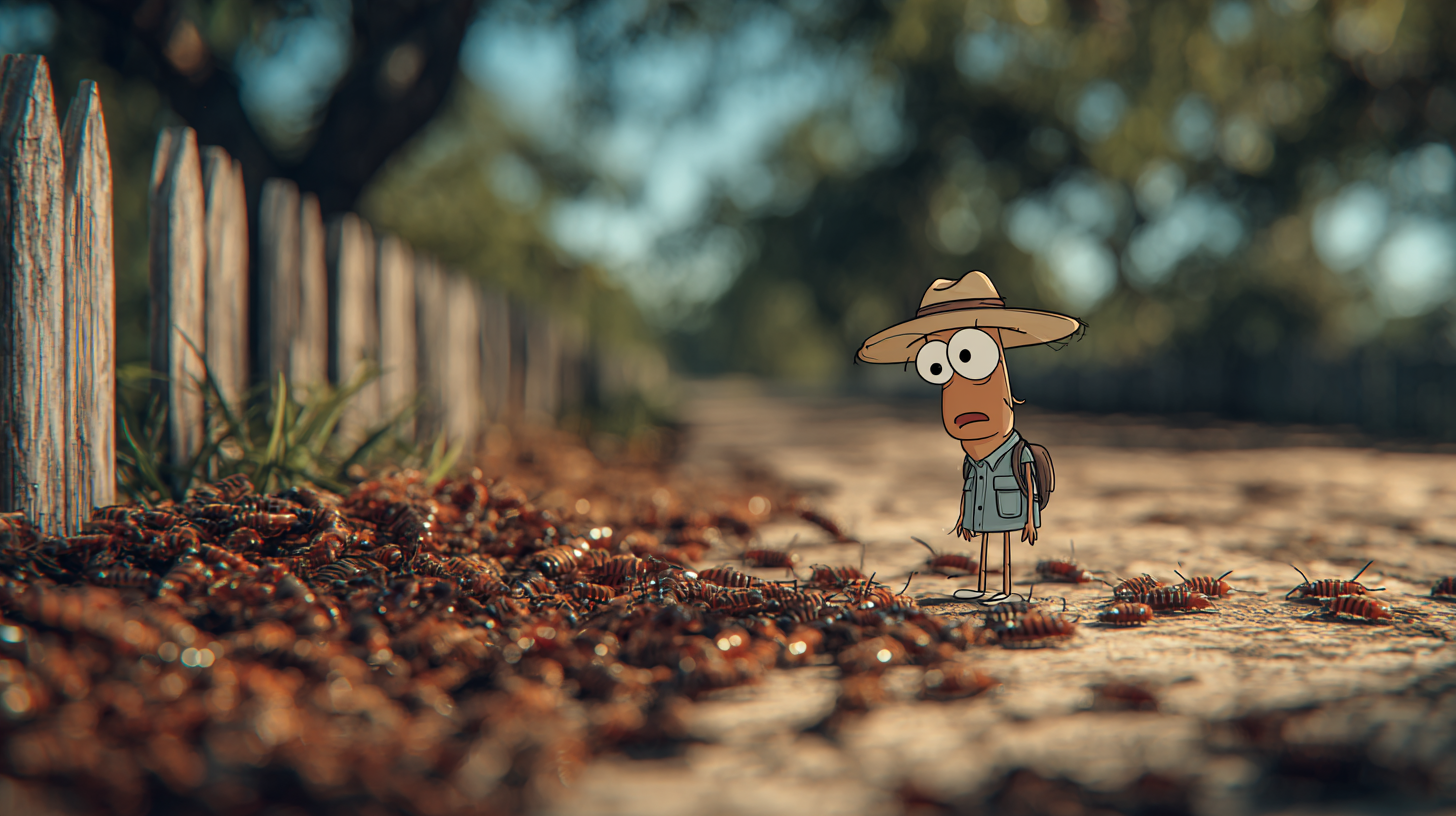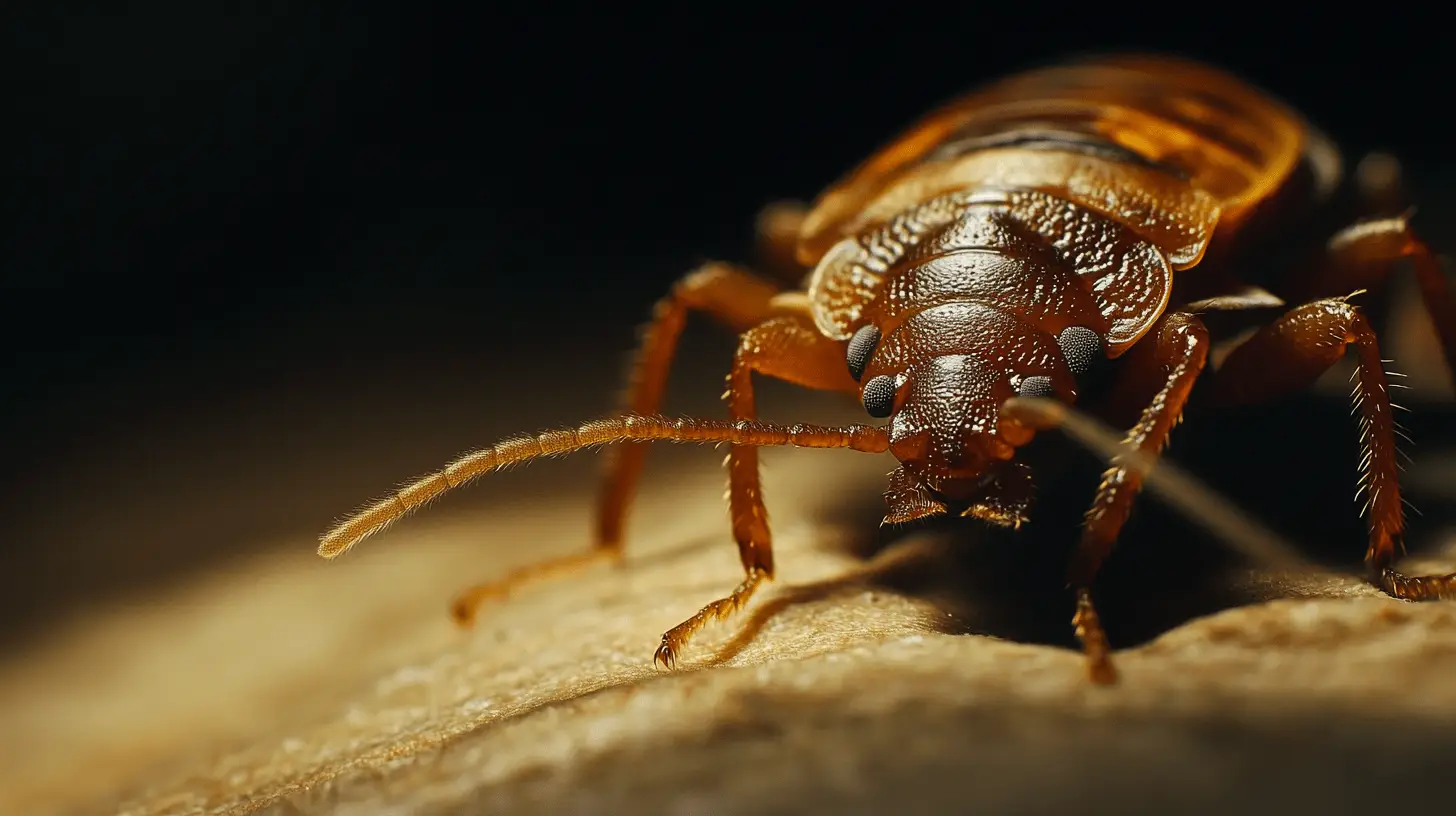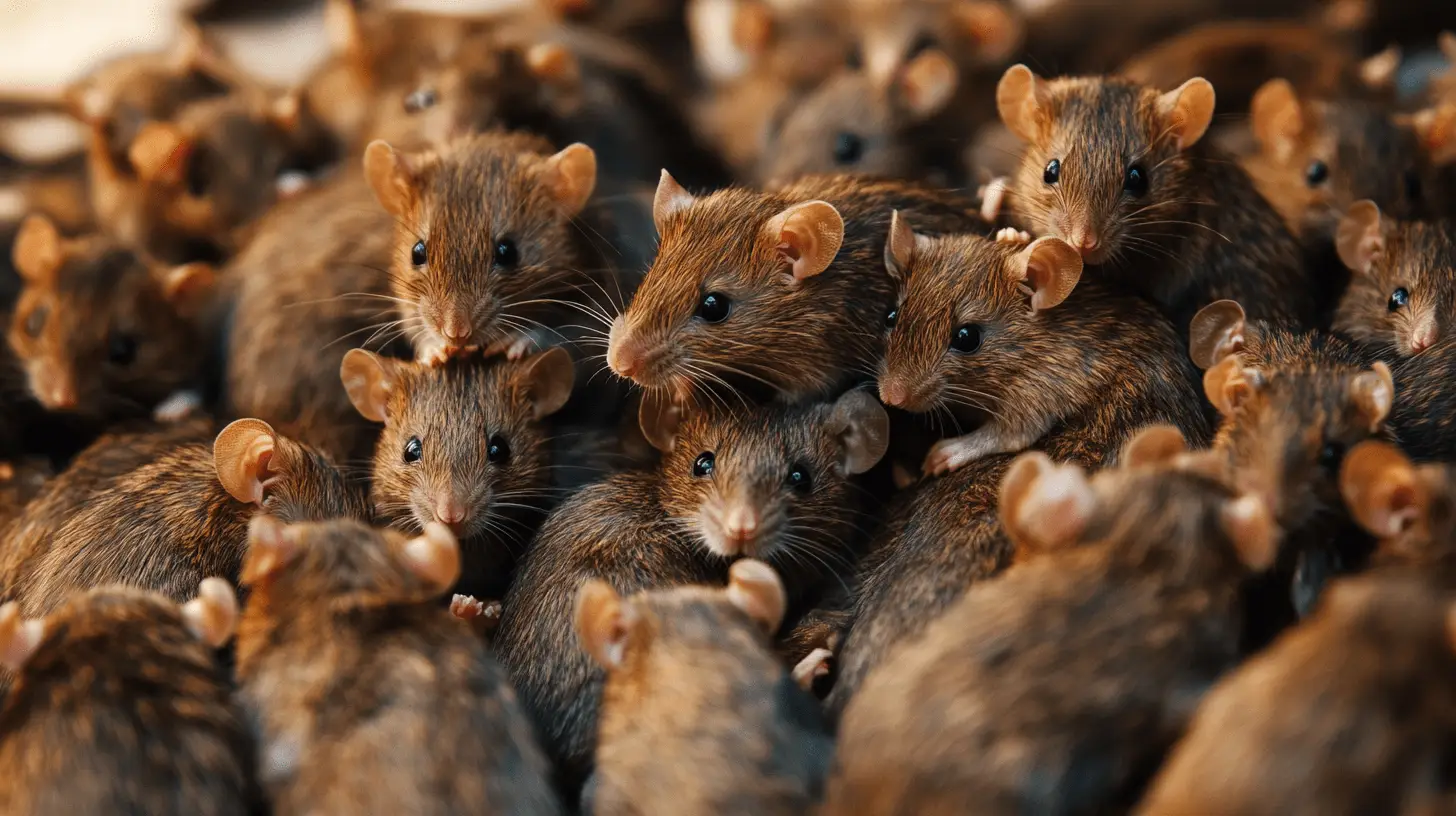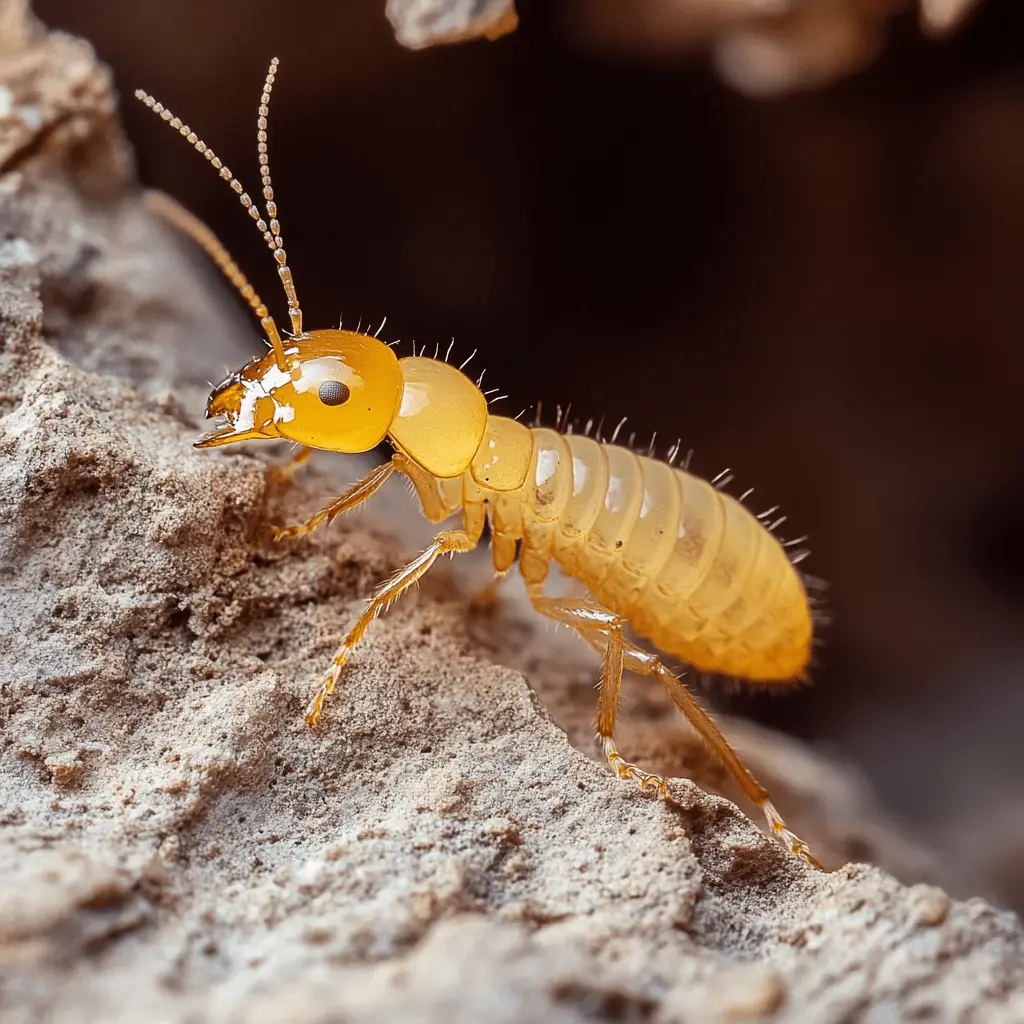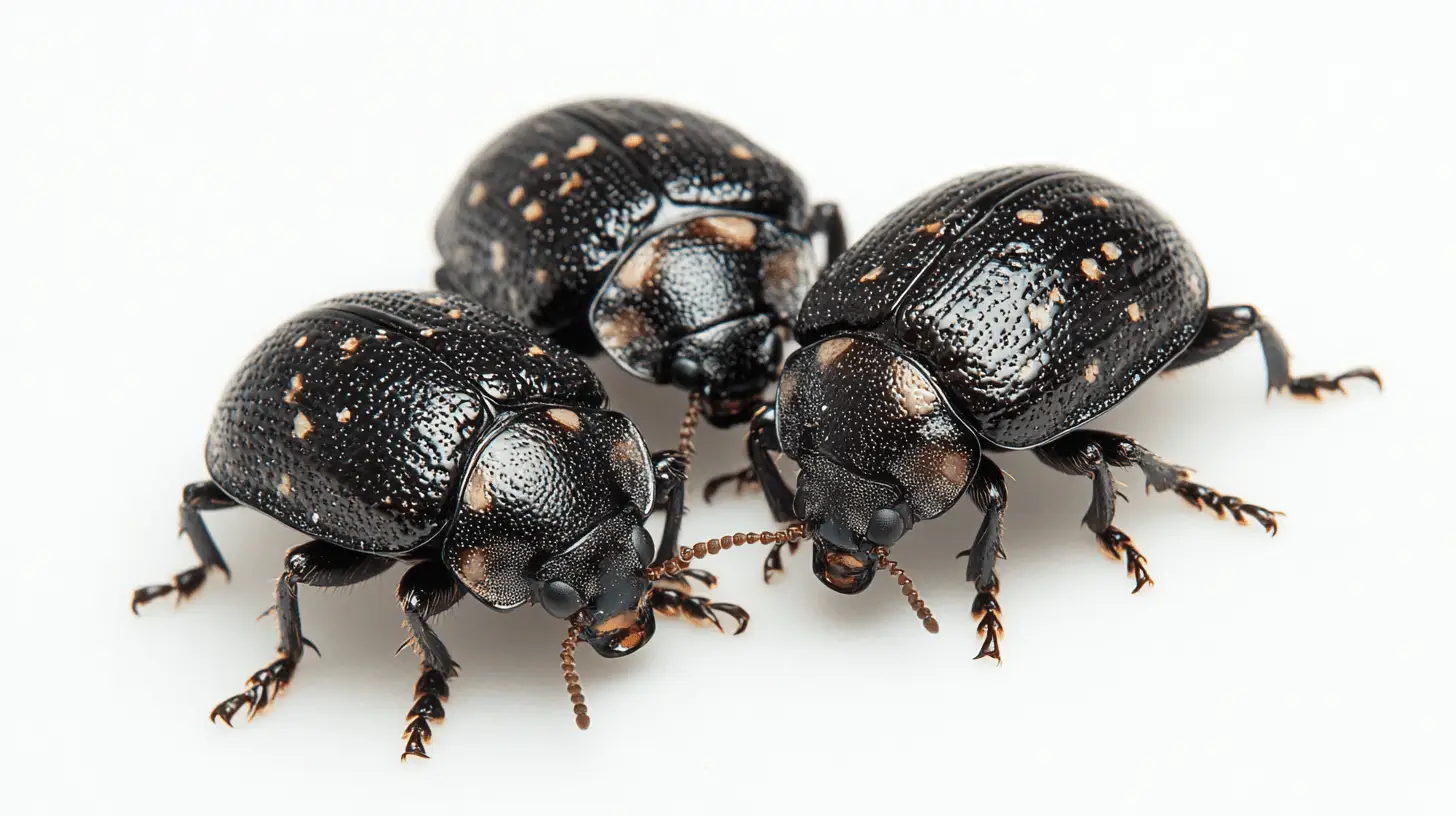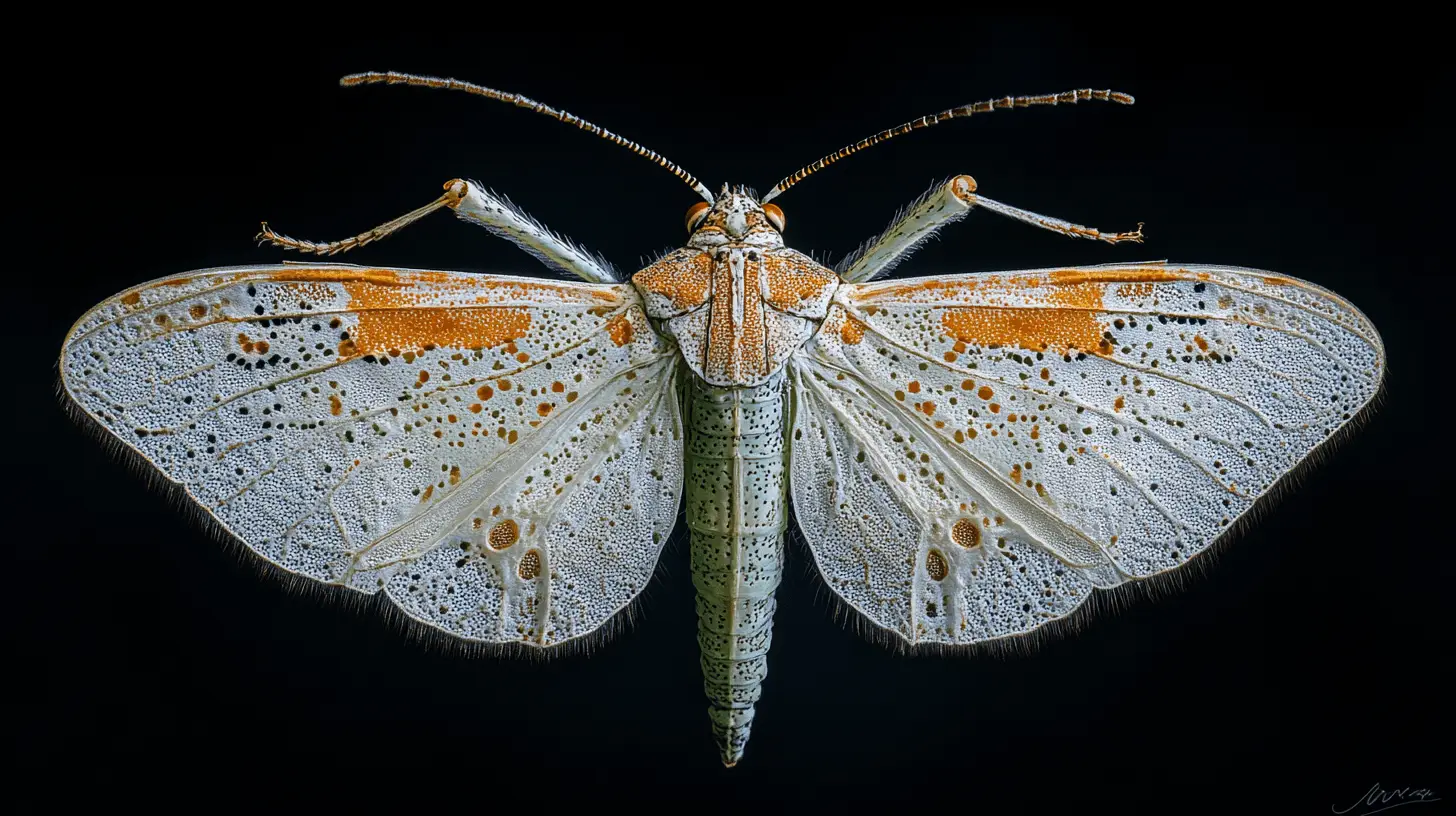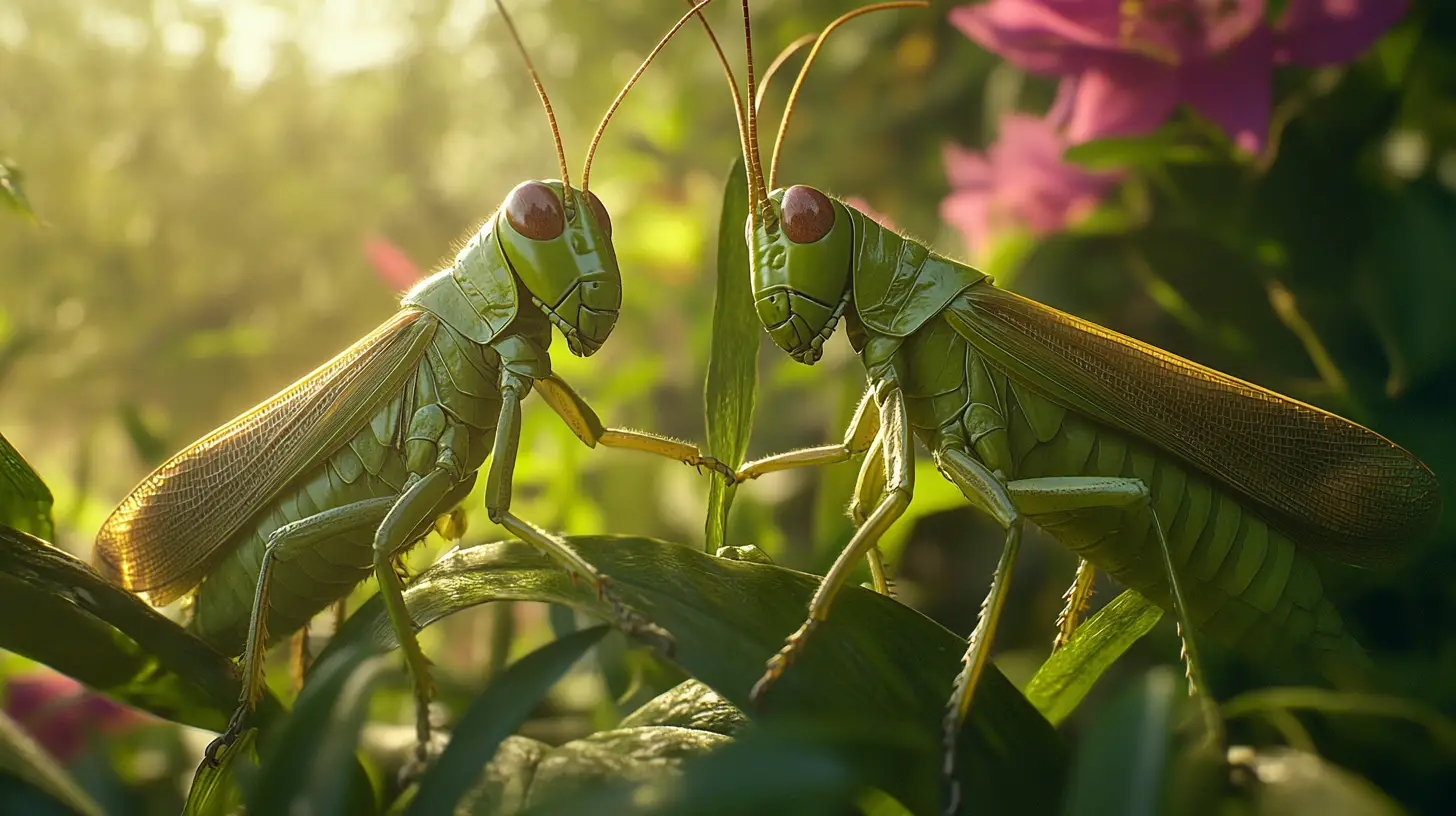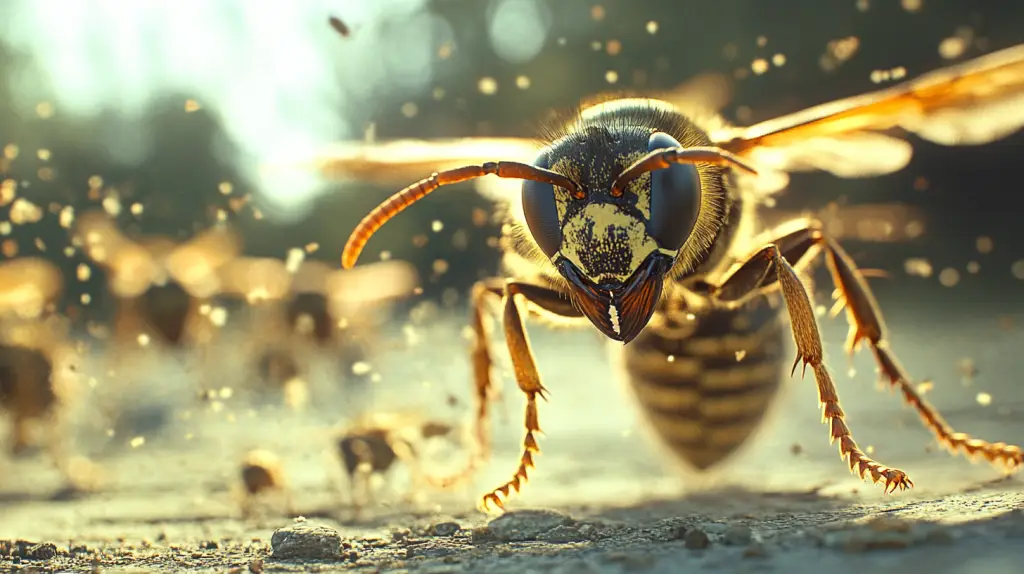
Table of Contents
Wasps are one of those pests that can quickly turn a peaceful afternoon outdoors into a stressful experience. If you live in Parrish, FL, you’re likely familiar with their sudden appearances around your home, especially during the warmer months. Whether it’s a paper wasp nest under your eaves or aggressive yellow jackets invading your backyard barbecue, dealing with wasps is not something you can ignore. Fortunately, there are safe and effective ways to get rid of wasps without putting your family or pets at risk.
Understanding why wasps choose to build their nests in certain areas is key to keeping them away. Wasps are attracted to quiet, sheltered spots around homes—think under roofs, in trees, or even in wall cavities. And while wasps do play an important role in natural pest control by hunting other insects, their aggressive behavior, especially around their nests, can make them unwelcome guests.
In this post, we’ll walk you through the steps to safely get rid of wasps in Parrish, from identifying the type of wasps in your yard to using preventative measures that ensure they don’t return. Living in a beautiful place like Parrish shouldn’t come with the constant fear of getting stung, and with the right approach, you can enjoy your outdoor spaces worry-free.
Key Takeaways
- Importance of Wasp Control: Wasps pose health risks due to their painful stings, sending many to the ER annually. Effective management ensures safety and enhances enjoyment of outdoor spaces.
- Indoor Wasp Solutions: Seal entry points and use commercial sprays to eliminate wasps indoors. Professional help is advised for indoor nests, especially if allergies are a concern.
- Outdoor Wasp Prevention: Remove food sources and use natural solutions to deal with nests. Identifying wasp species can aid in selecting the appropriate control methods.
- Understanding Wasp and Bee Differences: Recognizing differences in appearance, diet, and behavior between wasps and bees assists in proper pest management and maintaining ecological balance.
- Wasp Prevention Tips: Secure trash, eliminate standing water, and inspect regularly for nests to prevent wasp infestations. Tailored landscaping can also help mitigate wasp presence.
- Professional Assistance: In cases of large infestations or aggressive wasp behavior, seeking professional extermination services is often the safest and most effective approach.
How To Get Rid of Wasps
Managing wasps and hornets effectively enhances safety and enjoyment in your Parrish, FL home and yard. Carry out a combination of methods for successful control.
How to Get Rid of Wasps In My Home
Identify entry points to keep wasps out. Seal gaps and cracks in windows and doors. Use commercial wasp sprays to eliminate indoor intruders quickly. Pyrethroids and pyrethrins in these sprays kill on contact and work best from a safe distance of 20-27 feet.
Fill in small cavities or holes in walls where wasps may seek shelter. If a nest is built indoors, consider professional extermination services, especially if nests are high or you’re allergic to stings. A sealed trash can and clean surfaces deter wasps inside.
How to Get Rid of Wasps In My Yard
In your yard, removing food sources keeps wasps away. Collect fallen fruits and clean spills or food residues—sweet drippings attract wasps looking for carbs. Maintain closed trash cans to avoid inviting them.
Natural methods work effectively on nests. Dish soap and water suffocate wasps; apply the solution at dusk for most impact. Boiling water can destroy nests with instant results; dish detergent mixed into the water further immobilizes wasps.
Identify wasp species you encounter, as control strategies may vary. While green wasps are harmless pollinators, other species may require intervention. Choosing muted colors for outdoor furniture makes your yard less attractive to wasps.
What Is A Wasp?
Wasps are fascinating insects part of the order Hymenoptera, closely linked to bees and ants. In Parrish, FL, understanding the distinct categories of these insects is crucial for effective management strategies.
Social Wasps
Social wasps, including paper wasps, yellowjackets, and hornets, live in colonies with a hierarchical structure. They are particularly prominent in residential areas around Parrish.
- Paper Wasps are distinguishable by their slender bodies and distinct coloring. They construct umbrella-shaped nests from wood fibers, typically found under eaves or window frames. Generally non-aggressive, they defend vigorously if threatened.
- Yellowjackets possess bright yellow and black markings. Highly aggressive, especially in warm climates like Florida’s, they defend nests found underground or in wall voids. Their colony behavior amplifies during fall when they seek sweet foods.
- Hornets are larger than typical wasps, with black and white patterns. Even though their intimidating appearance, hornets prove troublesome only if nests are disturbed.
Solitary Wasps (Non-Social)
Solitary wasps, unlike their social counterparts, lead independent lives. These wasps, including mud daubers, are beneficial to your garden as they control pest populations naturally.
- Mud Daubers create tubular mud nests in sheltered spots, and although they look imposing, they pose minimal threat to humans. Their diet primarily includes spiders, aiding in natural pest control.
Understanding these insects’ behaviors and nesting habits allows for strategic control and management, ensuring your Parrish property remains safe and enjoyable.
What’s the Difference Between Wasps and Bees?
Wasps and bees, while sometimes confused, play distinct roles in nature and vary significantly in appearance, diet, and behavior. In Parrish, FL, understanding these differences is crucial for effective pest management and ecological balance.
Difference Between a Wasp and a Bee
- Appearance: Wasps are slender with smooth, shiny bodies and narrow waists. They often display bright yellow and black stripes, making them easily identifiable. In contrast, bees have rounder, fuzzier bodies with fuller forms. Their thicker legs are covered in dense hairs, facilitating pollen collection. Bees usually have muted brown or orange-brown tones.
- Diet: Wasps are predators, primarily feeding on insects and spiders, while occasionally consuming sugary substances like nectar. This predatory nature helps control pest populations, but their attraction to sweet foods can lead to conflicts with humans. Bees, but, are herbivorous, subsisting on plant pollens and nectar. They’re vital pollinators, aiding in the reproduction of flowering plants and agricultural crops.
- Sting: Wasps are able to sting multiple times, which poses a threat when nests are disturbed. This ability makes controlling wasp populations crucial for safety, especially in residential areas. Bees, in comparison, can sting just once, as they lose their stinger and later die. This defensive behavior underscores their less aggressive nature, making encounters less concerning than those with wasps.
Understanding these differences aids in making informed decisions about managing your environment, ensuring safety, and fostering ecological harmony, especially in areas like Parrish, FL, where both wasps and bees are prevalent.
Wasp & Hornet Identification
Recognizing various wasp and hornet types aids in safely and effectively managing these insects in Parrish, FL. Knowing their behaviors and nesting habits enables you to tailor control methods specifically.
Mud Daubers: Solitary Wasps with Unique Nesting Habits
Unlike more aggressive wasp species, mud daubers are generally non-aggressive and solitary. These wasps are named for their distinctive nests, which are made of mud tubes. You can often spot their nests attached to walls, eaves, or ceilings, where they use the mud tubes to house their larvae.
Mud daubers are known for their unique hunting behavior. They paralyze spiders with their sting, bringing them back to their nest to serve as food for their larvae. Though their presence may seem intimidating, mud daubers rarely sting humans unless provoked. In fact, they help control the spider population around your home.
One of the interesting aspects of mud daubers is their preference for building nests in dry, sheltered spots, such as garages, attics, or under roof eaves. Unlike social wasps, mud daubers don’t defend their nests aggressively, making them less of a threat to people. However, their nests can accumulate over time and create an unsightly mess, so it’s often a good idea to remove them if they’re in high-traffic areas.
Mud Daubers: Identification, Behavior, and Nest-Building Habits
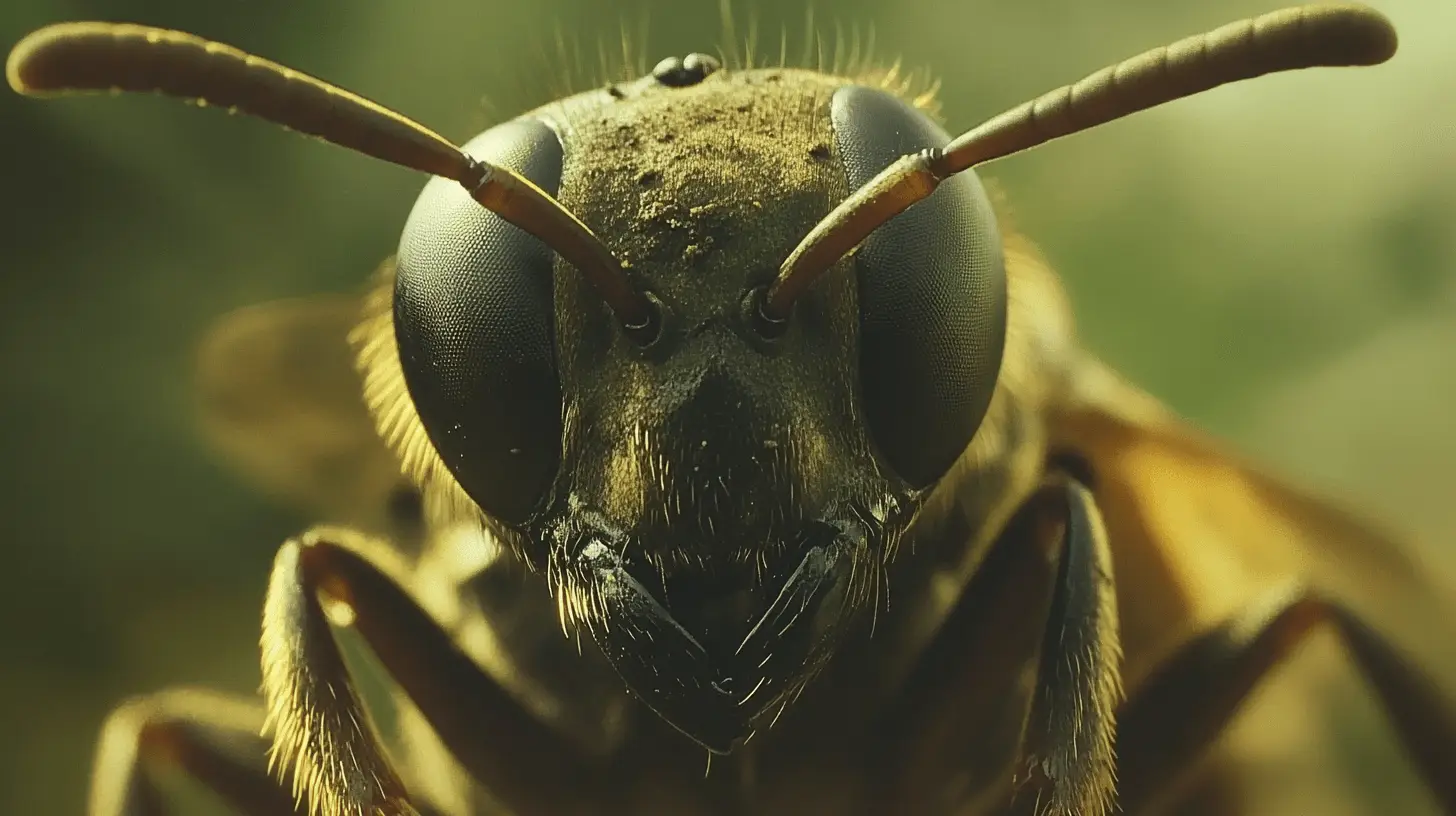
Physical Characteristics
- Size: 1/2 to 1 inch (12-25 mm) long
- Color: Black, may have pale markings or a metallic blue luster
- Body Shape: Long and slender with a thread-like waist connecting the thorax and abdomen
- Wings: Clear or dark
- Legs: Six legs, often long with a hunched stance
Distinctive Features
- Thread-waisted body with a long, slender segment between the thorax and abdomen
- Metallic blue or black coloration in some species
- Long legs with a characteristic hunched stance
Behavior
- Solitary wasps, not aggressive
- Rarely sting unless directly threatened
- Build distinctive mud nests
Nests
- Constructed from mud by females
- Shapes vary by species: short mud tubes (about 1 inch long) built side by side, or long mud tubes resembling organ pipes
- Often found in sheltered areas like eaves, porch ceilings, garages, sheds, and barns
Habitat
- Found throughout the United States
- Prefer sheltered sites protected from rain
Diet
- Adults feed on flower nectar
- Larvae feed on paralyzed spiders provided by the female
Mud daubers are beneficial insects as they help control spider populations. Although they may become a nuisance when nesting near human habitations, they are not typically dangerous due to their non-aggressive nature.
Paper Wasps: Territorial Yet Beneficial Garden Helpers
Paper wasps are known for the umbrella-shaped nests they build from a papery material made of chewed wood fibers mixed with saliva. These nests are often found hanging under eaves, porch ceilings, tree branches, or other sheltered spots. While paper wasps are not as aggressive as yellow jackets, they are still territorial and will defend their nests if they feel threatened.
One of the notable characteristics of paper wasps is their role as natural pest controllers. They feed on caterpillars, flies, and other garden pests, making them beneficial for maintaining a balanced ecosystem in your yard. However, their nests can grow quite large, and having them close to entry points like doors or windows can pose a problem, especially if children or pets are around.
Paper wasps tend to stay calm unless their nest is disturbed, but their sting can be painful and cause allergic reactions in some people. If you notice paper wasps building nests in areas where people frequent, it’s best to have the nest removed professionally to avoid any potential stings.
{ “@context”: “https://schema.org”, “@type”: “HowTo”, “name”: “How to Identify Paper Wasps”, “description”: “A guide to identifying Paper Wasps, including their physical characteristics, nest-building habits, behavior, and common species.”, “step”: [ { “@type”: “HowToStep”, “name”: “Physical Characteristics”, “itemListElement”: { “@type”: “HowToDirection”, “text”: “Paper wasps are 5/8 to 3/4 inch (16-20 mm) long, typically brownish with yellow or reddish markings. They have a slender body with a thin ‘waist’ connecting the thorax and abdomen. They have two pairs of wings and six long legs that dangle when flying. Antennae are present.” } }, { “@type”: “HowToStep”, “name”: “Distinctive Features”, “itemListElement”: { “@type”: “HowToDirection”, “text”: “Paper wasps have a slim, wasp-like body with long legs and an almost triangular shape when viewed from the side. Unlike bees, they are not fuzzy.” } }, { “@type”: “HowToStep”, “name”: “Nest Identification”, “itemListElement”: { “@type”: “HowToDirection”, “text”: “Paper wasps build open, umbrella-shaped nests made from chewed wood fibers mixed with saliva. The nests have a single layer of hexagonal cells visible from below and are often found in protected locations like eaves, porch ceilings, attics, and tree branches.” } }, { “@type”: “HowToStep”, “name”: “Behavior”, “itemListElement”: { “@type”: “HowToDirection”, “text”: “Paper wasps are semi-social, living in small colonies. While not typically aggressive, they will sting if disturbed or if their nest is threatened. They feed on nectar and insects, particularly caterpillars.” } }, { “@type”: “HowToStep”, “name”: “Common Species”, “itemListElement”: { “@type”: “HowToDirection”, “text”: “Common species include the European Paper Wasp (Polistes dominula), which has yellow and black coloration and orange-tipped antennae, and the Northern Paper Wasp (Polistes fuscatus), which is dark brown with lighter brown or yellow markings.” } }, { “@type”: “HowToStep”, “name”: “Benefit to Ecosystem”, “itemListElement”: { “@type”: “HowToDirection”, “text”: “Paper wasps are beneficial insects that help control garden pests like caterpillars. However, nests near human habitations can pose a concern due to the risk of stings.” } }, { “@type”: “HowToStep”, “name”: “Nest Removal”, “itemListElement”: { “@type”: “HowToDirection”, “text”: “Professional identification and removal may be necessary if nests are found in problematic locations near human activity.” } } ], “image”: “https://www.pestworld.org/pest-guide/stinging-insects/paper-wasps/”, “supply”: [ { “@type”: “HowToSupply”, “name”: “Nest identification guide” } ], “tool”: [ { “@type”: “HowToTool”, “name”: “Wasp detection and removal tools” } ], “totalTime”: “P1D”, “estimatedCost”: { “@type”: “MonetaryAmount”, “currency”: “USD”, “value”: “Varies” } }Paper Wasps: Identification, Behavior, and Nest-Building Habits
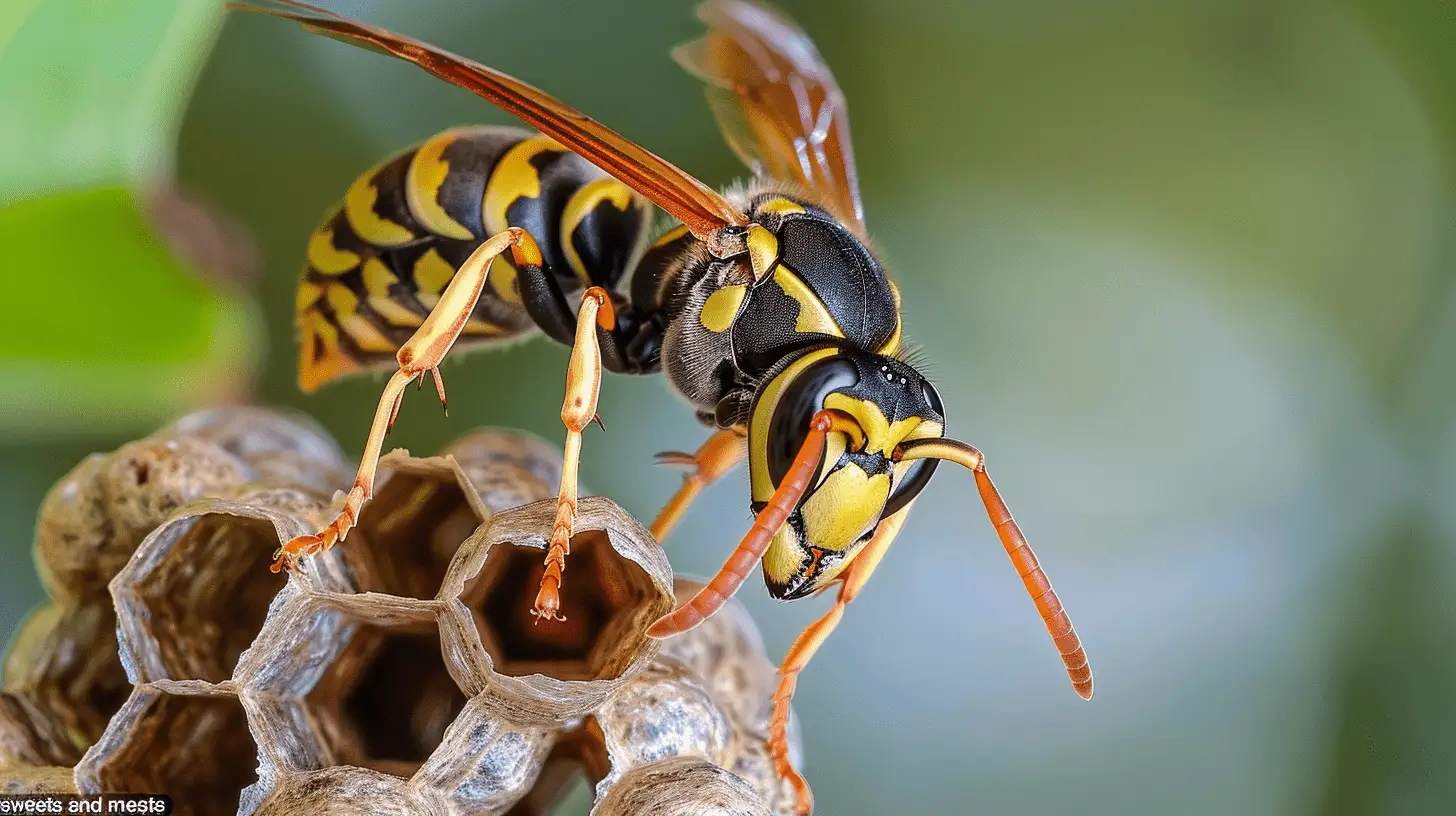
Physical Characteristics
- Size: 5/8 to 3/4 inch (16-20 mm) long
- Color: Typically brownish with yellow markings; some species have reddish markings
- Body Shape: Slender with a thin “waist” connecting thorax and abdomen
- Wings: Two pairs
- Legs: Six long legs that dangle when flying
- Antennae: Present
Distinctive Features
- Slim, wasp-like body with long legs
- Almost triangular shape when viewed from the side
- Not fuzzy like bees
Nests
- Open, umbrella-shaped nests without a protective outer covering
- Made of a paper-like material (chewed wood fibers mixed with saliva)
- Single layer of hexagonal cells visible from below
- Often found in protected locations like eaves, porch ceilings, attics, and tree branches
Behavior
- Semi-social, living in small colonies
- Not typically aggressive, but will sting if disturbed or nest is threatened
- Feed on nectar and insects, particularly caterpillars
Common Species
- European Paper Wasp (Polistes dominula): Yellow and black coloration, orange-tipped antennae
- Northern Paper Wasp (Polistes fuscatus): Dark brown with lighter brown or yellow markings
Paper wasps are beneficial insects that help control garden pests. However, their nests near human habitations can pose a concern due to the risk of stings. Professional identification and removal may be necessary if nests are found in problematic locations.
Yellow Jackets: Aggressive and Persistent Pests
Yellow jackets are one of the most aggressive wasp species you might encounter in Florida. Known for their striking black-and-yellow bodies, they are often mistaken for bees but are actually more closely related to wasps. What sets yellow jackets apart is their highly territorial nature—they will defend their nests vigorously, stinging multiple times without losing their stinger, unlike bees.
Yellow jackets tend to build their nests in hidden spots, such as underground burrows, wall voids, or attics, making them hard to detect until their population grows. These wasps are particularly active in the late summer and fall when their colonies are at their largest. They are also omnivorous, feeding on sugary foods and protein, which is why they are often seen scavenging at picnics and barbecues.
Interestingly, yellow jackets are not all bad. They play a beneficial role in controlling pest populations by hunting insects like flies and caterpillars to feed their young. However, their aggressive behavior and painful stings make them unwelcome around homes, especially when they build nests in high-traffic areas. If you find yellow jackets on your property, it’s essential to handle the situation carefully and, when needed, enlist professional help to safely remove the nest.
{ “@context”: “https://schema.org”, “@type”: “HowTo”, “name”: “How to Identify Yellow Jackets”, “description”: “A guide to identifying Yellow Jackets, including their physical characteristics, body structure, behavior, and nesting habits.”, “step”: [ { “@type”: “HowToStep”, “name”: “Physical Characteristics”, “itemListElement”: { “@type”: “HowToDirection”, “text”: “Yellow jackets are about 1/2 inch (12-13 mm) long, with queens reaching 3/4 inch (19 mm) in length. They have black bodies with bright yellow markings and a distinctive black dot on each yellow abdominal segment.” } }, { “@type”: “HowToStep”, “name”: “Body Structure”, “itemListElement”: { “@type”: “HowToDirection”, “text”: “Yellow jackets have a slender, wasp-like body, smooth with little hair (unlike bees). They have two pairs of wings and a sleek, aerodynamic appearance.” } }, { “@type”: “HowToStep”, “name”: “Behavior”, “itemListElement”: { “@type”: “HowToDirection”, “text”: “Yellow jackets live in colonies and are aggressive defenders of their nests. They exhibit a distinct hovering flight pattern before landing and often show a rapid side-to-side flight motion.” } }, { “@type”: “HowToStep”, “name”: “Nest Identification”, “itemListElement”: { “@type”: “HowToDirection”, “text”: “Yellow jacket nests are typically built underground in old rodent burrows but can also be found in wall voids, attics, and structural cavities. Nests are made of chewed wood fibers, resembling paper, and can house up to 4,000 wasps.” } }, { “@type”: “HowToStep”, “name”: “Diet”, “itemListElement”: { “@type”: “HowToDirection”, “text”: “Adult yellow jackets feed on sugary substances such as fruit juices, nectar, and human food, while larvae are fed protein-rich foods like insects and meat. Yellow jackets are often found scavenging around trash cans and picnic areas.” } }, { “@type”: “HowToStep”, “name”: “Key Identification Factors”, “itemListElement”: { “@type”: “HowToDirection”, “text”: “Key identification factors for yellow jackets include their yellow and black banded pattern, smooth body, aggressive behavior, and tendency to hover around food sources, especially in late summer and early fall.” } } ], “image”: “https://parrishpestcontrol.com/wp-content/uploads/2024/10/yellow-jacket-identification.png”, “supply”: [ { “@type”: “HowToSupply”, “name”: “Protective gear for identifying nests” } ], “tool”: [ { “@type”: “HowToTool”, “name”: “Yellow jacket identification guide” } ], “totalTime”: “P1D”, “estimatedCost”: { “@type”: “MonetaryAmount”, “currency”: “USD”, “value”: “Varies” } }Yellow Jackets: Identification, Behavior, and Nesting Habits
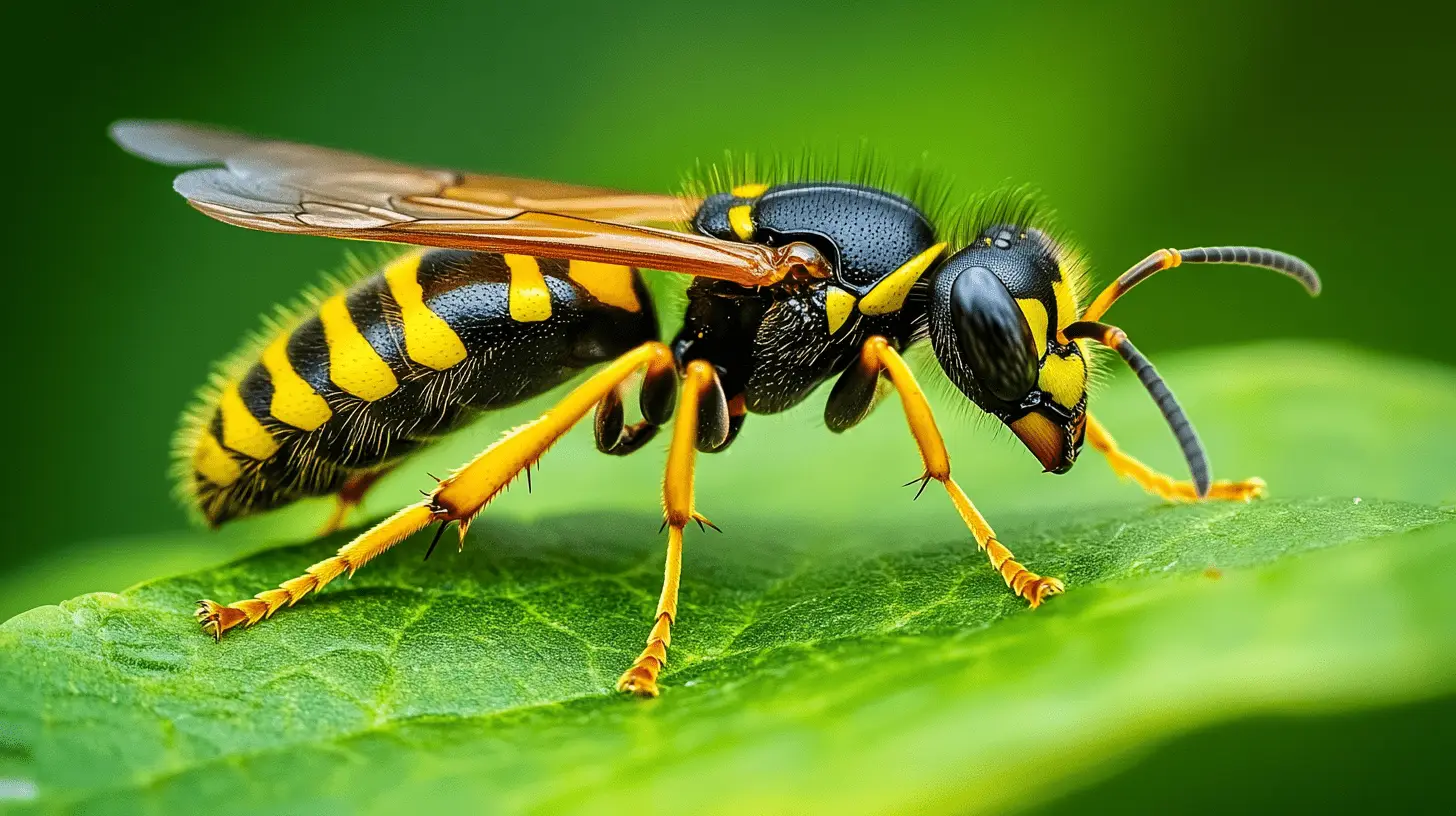
Physical Characteristics
- Size: About 1/2 inch (12-13 mm) long; queens are about 3/4 inch (19 mm) long
- Color: Black with bright yellow markings
- Distinctive feature: Black dot on each yellow abdominal segment
Body Structure
- Slender, wasp-like body
- Smooth body with little hair (unlike bees)
- Two pairs of wings
Behavior
- Live in colonies
- Aggressive defenders of their nests
- Distinct hovering flight pattern before landing
- Rapid side-to-side flight pattern
Nests
- Often built underground in old rodent burrows
- Can also nest in wall voids, attics, and other structural cavities
- Nests made of chewed wood fibers, resembling paper
- Can house up to 4,000 wasps
Diet
- Adults feed on sugary substances (fruit juices, nectar, human food)
- Larvae feed on protein (insects, meat)
- Known to scavenge around trash cans and picnic areas
Key Identification Factors
- Yellow and black banded pattern
- Smooth body (not fuzzy like bees)
- Aggressive behavior, especially late in summer
- Often seen hovering around food sources
Yellow jackets are most active in late summer and early fall, often hovering around food sources. They are aggressive defenders of their nests and can be problematic if they build nests near human activity.
Best Way To Prevent Wasp Nests
Preventing wasp nests involves a multifaceted approach that combines environmental management, strategic deterrence, and vigilant maintenance, particularly in places like Parrish, FL. Knowing that wasps are drawn to food and water, start by securing food sources. Ensure your trash cans have tight-fitting lids, clean up spills promptly, and avoid leaving pet food outdoors. Compost piles should be kept away from your home with secure bins or lids, and maintained regularly.
Water sources attract wasps, so eliminate standing water by fixing leaks in outdoor plumbing and ensuring bird baths are cleaned and refilled often. These actions not only deter wasps but also promote a healthier environment around your home.
Regular inspections help you remove potential nest sites and eliminate existing insect habitats, such as those of mud daubers or carpenter bees. Wasps often seek these cozy quarters for nesting, so staying ahead of them is crucial. To limit food supply, control insect populations like caterpillars and termites, which are primary wasp prey.
Seal entry points in your home by repairing building exteriors, focusing on cracks or crevices. These might serve as inviting nesting spots for wasps. Proper disposal of dead insects in sealed bags prevents attracting new ones, reducing the risk of nest formation.
A thoughtful landscaping approach can further reduce wasp presence. Keeping gardens free from blooming flowers at dawn deters activity since wasps are less attracted to flowerless gardens. Maintain these practices regularly to diminish wasp encounters while enjoying an outdoor space free from these pests.
DIY Solutions to Get Rid of Wasps in Parrish, FL
Wasps are not only a nuisance but can also pose a safety risk, especially for families with young children who love to play outside. If you’re dealing with wasps around your home in Parrish, FL, you may be looking for chemical-free, do-it-yourself (DIY) solutions to keep these stinging insects at bay. Here are some effective, tried-and-true methods that can help you deter wasps without resorting to harmful chemicals.
1. Use Decoy Wasp Nests
Wasps are territorial by nature, and they avoid areas where other wasps have already established a nest. This trick can work to your advantage. By hanging a decoy wasp nest around your patio or yard, wasps will likely steer clear of the area. You can easily find decoy nests online, or create your own by crumpling paper bags and hanging them in problem spots. Many homeowners in Parrish swear by this simple hack!
2. Mint and Peppermint Oil
Wasps dislike strong smells, particularly those of mint and peppermint. Planting mint around your outdoor space can act as a natural wasp repellent. If you don’t want to plant mint (which can be invasive), you can mix peppermint oil with water and spray it in areas where wasps tend to build nests. This method is not only eco-friendly but also adds a pleasant fragrance to your garden.
3. DIY Wasp Traps
For a more direct approach, you can create your own wasp trap using a simple jar or bottle filled with a sweet liquid, like sugar water or fruit juice. Add a bit of dish soap to the mixture to break the surface tension, causing the wasps to drown once they land in the liquid. Make sure to place the trap away from areas where your family frequently gathers to avoid attracting wasps to your outdoor living spaces.
4. Burn Coffee Grounds
Surprisingly, the smell of burning coffee grounds is something that wasps despise. Place some fresh coffee grounds in a fireproof dish and light them like incense. The slow burn will release an aroma that will keep wasps away. This method is perfect for outdoor gatherings or barbecues where wasps might otherwise be drawn to the food.
5. Soap and Water Spray
A quick and easy solution is to use dish soap mixed with water in a spray bottle. If you spot wasps building a nest, spray the soapy water directly onto the wasps and their nest. The soap breaks down the protective layers of their exoskeleton, causing them to suffocate. This method works best on small nests and should be done at night when wasps are less active.
6. Vinegar and Water Spray
Similar to soap, a vinegar solution can also be effective at repelling wasps. Combine equal parts white vinegar and water in a spray bottle and apply it to areas where wasps frequent. The strong smell of vinegar will deter them from nesting near your home, and this solution is safe for both children and pets.
7. Seal Entry Points
In addition to using repellents and traps, it’s important to ensure that wasps don’t have easy access to your home. Check for any small gaps or holes in your walls, eaves, or around windows and doors. Sealing these entry points with caulk can prevent wasps from entering and building nests in hidden areas like attics or sheds.
8. Plant Wasp-Repellent Flowers
Certain plants are known to repel wasps naturally. Marigolds, citronella, and eucalyptus are all excellent options to include in your garden. Not only do they keep wasps away, but they also add beauty and fragrance to your outdoor space.
Keep Your Parrish Yard Wasp-Free
Wasps are a common problem in many parts of Florida, including Parrish, but you don’t have to live with them buzzing around your home. By employing these simple DIY solutions, you can safely and effectively keep wasps at bay, allowing your family to enjoy the outdoors without fear of stings. If you’re ever dealing with a more severe infestation or hard-to-reach nests, consider contacting a local pest control expert for professional help. With these methods, your home will be wasp-free and ready for family fun!
Frequently Asked Questions (FAQs)
How can I effectively prevent wasps from building nests around my home?
Prevent wasps by eliminating food sources, such as unsecured trash, food residues, and pet food. Use tightly sealed trash can lids, clean spills promptly, and keep food indoors. Regularly inspect for potential nest sites and remove standing water. Maintain flowerless gardens during dawn when wasps are less active, and use muted colors for outdoor decor. By strategically managing your environment, you can deter wasp activity and prevent nests effectively.
Are there natural ways to eliminate wasps from my yard?
Yes, you can use natural methods like dish soap and boiling water to eliminate wasps. Mix dish soap with water and pour it over nests to suffocate the wasps. Boiling water is effective for underground nests but should be used with caution. Planting peppermint or using essential oils like peppermint, clove geranium, or lemongrass can also repel wasps. These methods are effective, eco-friendly solutions to manage wasp presence in your yard safely.
Why is it important to distinguish between wasps and bees?
Distinguishing between wasps and bees is crucial for effective pest control and environmental health. Wasps have smoother bodies and are predators, feeding on insects. They can sting multiple times, making them a threat when nests are disturbed. Bees, however, are fuzzier, round-bodied pollinators, essential for plant pollination, and can sting only once. Misidentifying them can lead to ecological imbalance and ineffective pest management, especially in areas with both species present.
What should I do if I find a wasp nest indoors?
If you find a wasp nest indoors, seal entry points to prevent more wasps from entering. Use commercial wasp sprays specifically designed for indoor use, or consider hiring professional exterminators if the nest is large or hard to reach. Ensure that all family members and pets are away from the area during treatment to maintain safety. Swift and strategic action is important to effectively eliminate the indoor wasp threat without endangering household members.
How do mud daubers differ from other wasps?
Mud daubers are solitary wasps, unlike social wasps that live in colonies. They are generally non-aggressive and beneficial, as they help control spider populations in gardens. Mud daubers build distinctive, mud-constructed nests and are less likely to sting unless directly threatened. Their behaviors and nesting practices make them valuable ecological agents rather than pests, contrasting with more aggressive wasp species like yellowjackets that pose greater risks when their nests are disturbed.

